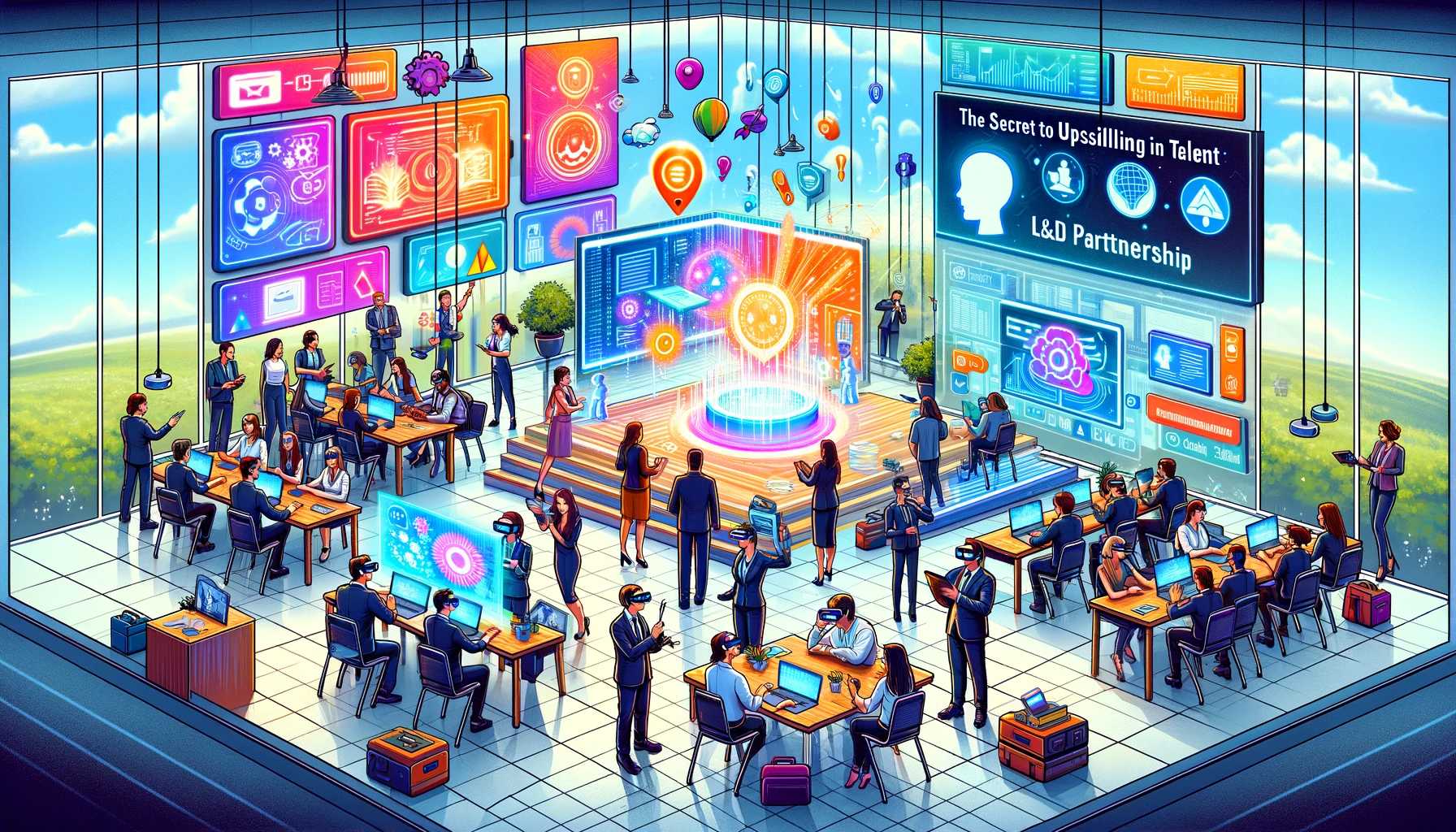In today's fast-paced and ever-evolving business landscape, one thing is certain: talent is key. Companies that invest in upskilling their employees not only stay ahead of the competition but also foster a culture of innovation and growth. But with technology advancing at breakneck speed, how can organizations ensure that their workforce remains relevant and equipped with the necessary skills to thrive? The answer lies in strategic partnerships between Learning and Development (L&D) departments and technology companies.
Gone are the days when upskilling meant simply sending employees to a training workshop or enrolling them in a course. While traditional methods still have their place, they're no longer sufficient to keep pace with the rapid rate of change in today's digital world. Instead, organizations need to adopt a more holistic approach to talent development one that leverages the power of technology to deliver personalized, just-in-time learning experiences.
So, what exactly does this look like in practice? Let's break it down.
First and foremost, effective upskilling starts with understanding the needs of your workforce. This means conducting regular skills assessments to identify gaps and areas for improvement. By taking a data-driven approach to talent development, organizations can ensure that their training initiatives are aligned with the evolving needs of the business.
But it's not just about identifying skills gaps it's also about delivering targeted and relevant learning experiences that meet the unique needs of each employee. This is where technology comes into play. By leveraging learning management systems (LMS), AI-driven adaptive learning platforms, and virtual reality (VR) simulations, organizations can create highly engaging and interactive training programs that cater to individual learning styles and preferences.
For example, imagine a sales associate who needs to improve their negotiation skills. Instead of attending a one-size-fits-all workshop, they could participate in a virtual reality simulation that places them in realistic scenarios where they must negotiate with clients. Not only is this approach more immersive and engaging, but it also allows employees to practice their skills in a safe and controlled environment.
Of course, technology alone isn't enough to drive meaningful upskilling initiatives. That's where strategic partnerships come into play. By collaborating with technology companies that specialize in learning and development solutions, organizations can access cutting-edge tools and expertise that may not be available in-house.
For instance, a retail company looking to upskill its workforce in e-commerce could partner with an e-learning platform that offers specialized courses in digital marketing, website development, and customer engagement. By tapping into the platform's resources and industry knowledge, the company can accelerate its upskilling efforts and stay ahead of the curve in an increasingly competitive market.
But it's not just about accessing external resources it's also about building a culture of continuous learning within the organization. This requires buy-in from leadership, support from managers, and a commitment to fostering a growth mindset among employees. By creating opportunities for ongoing learning and development, organizations can empower their workforce to take ownership of their career development and stay ahead of the curve in an ever-changing job market.
Moreover, strategic partnerships can also facilitate knowledge sharing and collaboration between organizations. By joining forces with industry peers, companies can pool their resources, share best practices, and collectively address common challenges. This could take the form of industry-specific consortiums, cross-sector collaborations, or even informal networking groups. Regardless of the format, the key is to create opportunities for collaboration and knowledge exchange that benefit all parties involved.
Furthermore, it's crucial to recognize that upskilling talent isn't a one-time event it's an ongoing journey. Technology is constantly evolving, and so too are the skills required to succeed in the workforce. As such, organizations must remain agile and adaptable, continuously updating their training programs to reflect the latest trends and technologies.
This requires a proactive approach to talent development one that anticipates future needs and prepares employees for the challenges that lie ahead. For example, as artificial intelligence (AI) and automation become increasingly prevalent in the workplace, organizations may need to invest in training programs that focus on skills such as data analysis, problem-solving, and critical thinking. By staying ahead of the curve, organizations can future-proof their workforce and ensure that they remain competitive in a rapidly changing landscape.
Moreover, upskilling talent isn't just about improving individual skills—it's also about fostering a culture of innovation and creativity within the organization. By encouraging employees to think outside the box, experiment with new ideas, and embrace failure as a learning opportunity, organizations can unleash the full potential of their workforce. This requires leadership to create a supportive environment where employees feel empowered to take risks and challenge the status quo.
Additionally, organizations must recognize the importance of diversity and inclusion in their upskilling efforts. Research has shown that diverse teams are more innovative, creative, and resilient qualities that are essential for success in today's fast-paced business environment. By investing in programs that promote diversity and inclusion, organizations can tap into a broader range of perspectives and ideas, driving innovation and driving business success.
Ultimately, the secret to upskilling talent lies in embracing a holistic approach that leverages the power of technology, fosters strategic partnerships, and cultivates a culture of continuous learning and innovation. By investing in their workforce today, organizations can ensure that they are well-equipped to navigate the challenges of tomorrow and seize the opportunities that lie ahead.
In conclusion, the secret to upskilling talent lies in strategic partnerships between Learning and Development departments and technology companies. By leveraging the power of technology to deliver personalized learning experiences, accessing external resources and expertise, and fostering a culture of continuous learning and collaboration, organizations can empower their workforce to thrive in an increasingly digital world. So let's embrace the power of partnerships and invest in the future of our talent today.
